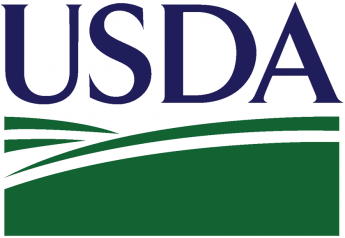How Higher Transport Costs Impact U.S. Agriculture

An analysis by the International Monetary Fund (IMF) released in March 2022 found that the cost of shipping a container on the world’s transoceanic trade routes increased seven-fold in the 18 months following the declaration of the COVID-19 pandemic in March 2020, while the cost of shipping bulk commodities spiked even more over the same period. In general, when freight rates double, inflation picks up by about 0.7 percentage point, and more importantly, those effects tend to persist, lasting up to 18 months. The IMF’s analysis did not include the impact of the Russian invasion of Ukraine in late February 2022, which raised energy prices even higher, thus exacerbating the situation.
A number of factors have contributed to this price spike. While the higher prices of petroleum and petroleum products such as gasoline and diesel fuel likely head the list, there has been a shortfall of the capacity to ship goods internationally compared to the level of demand for such services that was enhanced by the inability of the public, especially in developed countries, to spend their resources on a range of services associated with dining, travel, and other leisure activities due to lockdowns imposed on those sectors in an effort to slow the spread of the COVID-19 virus. Instead, tens of millions of people diverted their typical spending on such activities toward purchases of goods, especially durable goods. During the peak of the pandemic, the financial firm Goldman Sachs estimated that the share of U.S. goods consumption compared to utilization of services was about 15 percent higher than the typical split between those two categories.
During the peak of the pandemic, many shipping companies delivered containers with masks and other medical supplies to countries in the developing world such as in Africa and Latin America, simply left the containers behind rather than wait for them to be unloaded and returned with new cargo to the ships. As a result of the limited supply of containers worldwide, many shipping companies made strategic decisions to prioritize delivery of goods from Asia to the United States, to the disadvantage of many U.S. firms seeking to ship their products from U.S. ports to Asian destinations. According to an analysis conducted by the business cable channel CNBC, that decision by several major shipping companies to deliver their Asian-made goods to West Coast ports and not wait for return cargo to be loaded caused a loss of $1.3 billion in U.S. agricultural exports left sitting on docks between July and December 2020.
With respect to the U.S. agricultural sector, about 20 percent of U.S. agricultural production is shipped to other countries as exports, ranging from about 75 percent for U.S. cotton down to about 10 percent for U.S. beef among major commodities. The vast majority of exports destined for our North American neighbors in Mexico and Canada are shipped overland via rail or truck and do not utilize ocean transport. As to the share of imported food in U.S. consumption, USDA’s Economic Research Service estimated in 2016 that 12.7 percent of food consumed in the United States consisted of imported food and beverages such as produce from Chile or wines from France, roughly double the share from the early 1990’s. Mexico and Canada are the two largest sources of U.S. agricultural imports in most years, also not requiring ocean transport. Despite these factors, USDA now projects that U.S. agricultural exports will reach a record level of $191 billion in value for 2022, while imports will also reach a record $180 billion as well, both largely due to higher commodity prices.
The recent surge in transportation costs has not been limited to ocean shipping. Farmers, ranchers and other intermediaries in the U.S. food supply chain rely on trucks, river barges, and railroads to receive their inputs such as fertilizer and deliver their products to markets or processing facilities. Those rates have also increased in the last few years, although not to the degree that ocean shipping rates have. Between June 2020 and March 2022, the national spot rate per mile for shipping cargo in an enclosed, unrefrigerated truck (van style) increased by 68 percent, although those rates have started to decline over the last few months. Barge rates from various ports along the Mississippi River system have also risen during this same period–increasing by 122 percent between March 2020 and March 2022 for shipments from the Twin Cities (Minnesota) to the Gulf, but declining from peak levels in recent months.
The higher costs of inland transport are largely driven by higher diesel fuel costs. Since March 2020, the spot price for diesel at the U.S. Gulf Coast rose from $1.35 per gallon to $4.24 per gallon, an increase of 214 percent. In addition, higher rates for trucking have also been driven in part by a shortage of people willing and trained to drive long haul trucks. An industry association estimated that they had a shortfall of 80,000 drivers in 2021, because many drivers have left the profession in search of higher wages and because of the isolating nature of the work.
There are currently some legislative efforts to reduce the minimum age for individuals with chauffeur driver’s licenses (CDL’s) to drive trucks across state lines, currently at 21 years of age. In January 2022, the Federal Motor Carriers Safety Administration set up a pilot program to allow firms to set up apprenticeship programs for 18 through 20 year olds with CDL’s to drive in interstate commerce.
A few weeks ago, Congress passed and President Biden signed the Ocean Shipping Reform Act, which provides the Federal Maritime Commission (FMC) with new authorities to discipline shipping companies’ use of demurrage and other fees to raise their customers’ costs and enforce companies’ obligations to support U.S. exports. Some of the provisions of the new law are considered to be ‘self-executing’ and will go into effect almost immediately, such as restrictions on detention and demurrage fees, while sanctions against leaving U.S. cargo on the docks while returning empty containers to Asia will have to go through a rule-making process to be implemented.
As of February 2022, USDA projects that 2022 U.S. net farm income will decline by about $5 billion as compared to 2021, largely due to higher input costs more than offsetting high commodity prices, as well as lower direct government payments than were made in 2021 due to the impacts of the pandemic. This projected figure of $113.7 billion is still well above the 2000-2021 average of just below $100 billion in real terms. An updated set of forecasts will be released in September.







